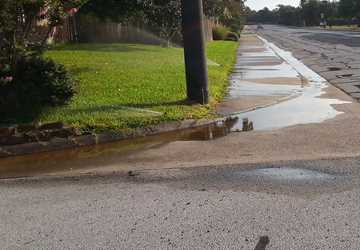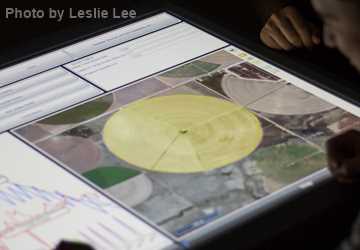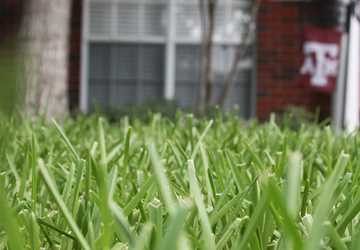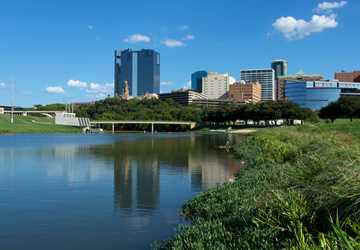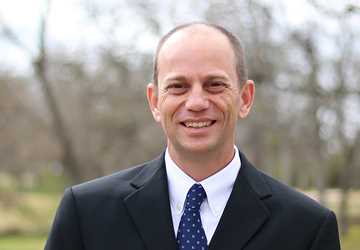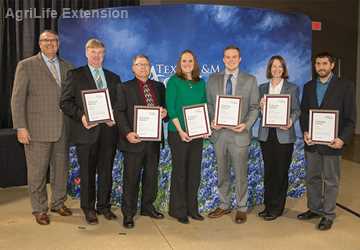By Leslie Lee
In December 2015, Dr. John C. Tracy was officially named director of the Texas Water Resources Institute (TWRI). Tracy had served as director of the Idaho Water Resources Research Institute at the University of Idaho for the last 11 years, also serving as the associate vice president for research and previously as interim vice president for research at the university.
With an extensive background in civil engineering — a doctorate and master’s from the University of California-Davis and his bachelor’s from Colorado State University, all in civil engineering — and an impressive research record in agriculture and water resources, Tracy is helping bring interdisciplinary research to the forefront of TWRI’s efforts.
txH2O sat down with Tracy to discuss his transition to the institute and get his take on everything from groundwater management to Texas barbecue.
How has your background prepared you to be TWRI’s director at this particular time in Texas water?
I’ve been in research administration, in particular environmental water resources administration, for more than 15 years, and that has taught me about the business of research and the business of outreach and engagement. That preparation was invaluable and enables me to work in a leadership capacity. In regards to the specific issues here in Texas, I’ve worked in a variety of climatological zones — everywhere from Kansas and South Dakota to Nevada, California and Idaho. That doesn’t cover all of the climatological zones found in Texas, but it has allowed me to see many different perspectives on water management and the different approaches for moving research forward. I’ve seen approaches on how to get information to urban settings versus rural settings, the different perspectives that come with areas relying on dryland agriculture versus those on irrigated agriculture, communities living on groundwater versus surface water. And I think that breadth of experience has given me a good foundation to take on this position.
The level of awareness in Texas that water is an important issue that needs to be addressed, and how The Texas A&M University System can use its research, extension and education activities to help, makes it a really opportune time to be here.
But, I also completely understand that the range of water issues in Texas is about as broad as you can get. And they are very representative of the range of water issues you see across the United States and the world. So, even with the good foundation that I have, it is still a learning process.
This particular time in Texas water is very interesting because Texas has gone through a series of droughts, intermixed with some flooding, and a large expansion of the urban population. Texas is very cognizant of the need to adequately manage its water resources to continue the population and economic activity and not face situations like what California has faced, where you see significant parts of the economy slow down because of a lack of water. The level of awareness in Texas that water is an important issue that needs to be addressed, and how The Texas A&M University System can use its research, extension and education activities to help, makes it a really opportune time to be here.
What is your vision for the institute over the next five years?
My vision for the institute is several-fold. First, continue its core activities that have been well-recognized and well-respected across much of the water resources community in the state. What I would like to do is build on that and have the institute present more of a face of water resources for the Texas A&M System. We want TWRI to be a focal point that communicates all of the faculty’s and researchers’ water capabilities to constituents around the state and nation. We want to show what’s here and make sure everybody is aware of it.
Second, with our programmatic activities, I would like to push our engagement with the growing metropolitan areas in Texas and have a role in moving forward research and outreach activities that would be more helpful to urban areas. I’d also like us to engage more with industries that need high-quality water. We already do this with agriculture, obviously, but there are many more industries that have those types of water management needs. And lastly, for Texas A&M to continue its role in the global economy, we need to be able to address water issues around the world and especially in developing nations.
We want TWRI to be a focal point that communicates all of the faculty’s and researchers’ water capabilities to constituents around the state and nation. We want to show what’s here and make sure everybody is aware of it.
As you are meeting water resources people around the state, what concerns about Texas water are you hearing most often?
There are two categories of major concerns out there: physical and policy/regulatory. With physical concerns, drought is still ever-present in everyone’s minds. It’s clear that because of the drought and flooding in Texas, building resilience to droughts is on people’s minds across many fields — from agriculture to ecology to urban studies. It’s very clear that working toward building better drought resiliency into Texas water planning and management is a big concern. The second physical concern is an awareness of the need to effectively manage the state’s groundwater supplies. Aquifers are not going to be managed under one catch-all system, but rather we should be really focusing on developing mechanisms to effectively manage groundwater for both the economies and communities it supports, but also for the physical circumstances in which groundwater exists.
Then on the policy and regulatory front, there’s a tremendous amount of concern related to how changes in water quality regulations and potential endangered species listings could impact Texas waterways and Texas’ ability to manage its water. There is a fair amount of work going on in relation to riparian ecology and improving and protecting wildlife habitat because having a species listed potentially takes a lot of the maneuverability out of water management capabilities.
From your perspective, what do you think are the most pressing water resources issues facing Texas right now?
We tend to focus on the short-term: potential regulatory constraints or ESA (Endangered Species Act) listings, or drought when it’s happening, or declining aquifers when they’re rapidly dropping.But I think all of those issues wrap-up into one big subject, which is having a statewide water plan that allows for regional flexibility in implementing resilient water management strategies.
There’s a tendency to say, ‘Well we have the state water plan and it has all of the answers for how we manage water.’ But what I’ve seen here so far is that the plan provides more guidelines and roadmaps for all of the regional water entities — river authorities, groundwater management areas, etc. — so I think it’s good in the sense that it lays out the parameters of what needs to be addressed at a regional to local level in developing good water plans. And then the implementation, the actual management, occurs at the more local level, and I think that’s an effective way to go.
When we approach water issues, we need to think of them in relation to the whole of water management.
When we’re looking at the big issues, such as drought and listings of species, all of those individual issues that need to be addressed must be viewed in an integrated fashion. That is an overriding theme from my perspective. Because if you’re looking at a drought plan and your whole drought plan can be blown apart by a species being listed, then you don’t have a very effective drought plan. And if you have a water management plan that only works when you’re not in a drought, then, again, not a good plan.
So, if you have a plan that looks at all of the components in an integrated fashion, then maybe there’s a potential to find synergies for what you’re doing to try to mitigate against floods and develop drought-resilient water plans. There are always opportunities to look at these things through integrated management and not just as individual problems. When we approach water issues, we need to think of them in relation to the whole of water management.
Can you tell us about your dual appointment, as both director of TWRI and a professor in the Zachry Department of Civil Engineering, and your role in the engineering community at Texas A&M?
My educational background has always been in civil engineering, but my research has always had a large agricultural focus to it, so this was a natural fit to help bridge these two worlds here. In practice, it’s been great because having the appointment in engineering has allowed me to more effectively build trust with faculty and administrators in engineering as we move forward on opportunities together. We have the ability to bring together these two huge colleges within Texas A&M and attack some of these interdisciplinary issues really effectively.
What future ventures are you most looking forward to as TWRI director?
Right now I’m still looking forward to learning a whole lot more about Texas water issues and meeting the broader Texas water resources community. I’ve already met a lot of people, but I’d say it’s been just a fraction of the people I will have met a year or two from now. That venture of just becoming more embedded in and understanding of the water landscape in Texas is a lot of work, but I’m looking forward to it.
I’m also excited about the water-energy-food nexus program in development at Texas A&M and where that can go. TWRI will play a supportive role, and the program will bring together a broad number of faculty groups across campus to address this interdisciplinary issue. I see that really growing and Texas A&M being well-known for it five years from now.
And, just for fun, what have been your favorite parts of moving to Texas and transitioning to life in Aggieland?
My wife and I are foodies, and everywhere we’ve lived we’ve gone out of our way to sample the local version of barbecue. So, when we were in Washington D.C., we went to the North Carolina coast and had east Carolina barbecue, which is a different style than Carolina hill barbecue, which is different than Memphis barbecue, and we really enjoyed that. But, none of those focus on brisket barbecue. So, we’ve really enjoyed sampling the wide range of brisket barbecue here. There are rankings out there of the best barbecue joints in Texas, and we’ve already been to several of those in Bryan and Austin.
We’ve enjoyed the unique and distinct cuisine in the various regions around Texas; that has been quite fun. We came from a pretty good food scene, but it’s much bigger and better down here.
Another part of living in College Station that’s struck me is Kyle Field; the magnitude of Kyle Field is always stunning when I drive by. It is just impressive beyond belief. It serves as a landmark for me.
One big change from moving here has been adjusting our gardening to the climate and the soils. I’ve always gardened, and the biggest shock here has been realizing that we have to be on top of our gardening in January. We realized that we had to get our tomato starts going in January so that they’d be ready for planting in the middle of March! It’s a very different gardening schedule for us. And when we started looking at things that we can grow here, it’s a whole new world! We like pomegranates and realized we can grow pomegranates here, so we ordered some and should have some fruit by the fall, and there’s no other place we’ve lived where we could do that.
People have also been incredibly friendly and helpful here in College Station, but also as we’ve driven around to Houston and Dallas and other cities, it seems to be part of Texas culture that people here are overtly friendly, and that’s been great.




